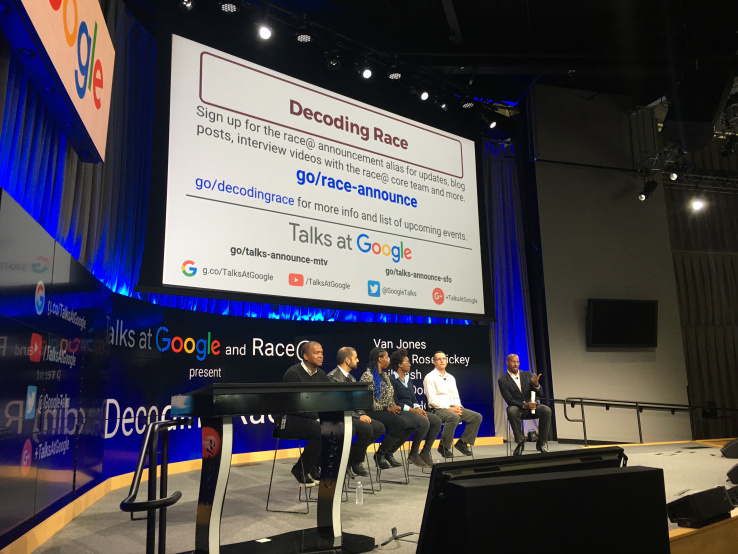

You may remember that time Google was under fire for wrongfully indicating that photos of black people were gorillas, and the time Microsoft’s AI bot named Tay turned incredibly racist. Today at Google’s Mountain View headquarters, the company acknowledged its shortcomings, as well as the shortcomings of other technologies in relation to racism and bias, at Decoding Race, the fourth installation of Google’s Race@ series to address issues of race and racial justice.
“That day was one of the worst days of my professional life, maybe my life,” Bradley Horowitz, who led up Google Photos at the time, said about the day he heard about the gorilla incident. “It was launched to great reception and I was feeling pretty good about things. I woke up and my inbox was on fire. People were typing in gorilla and African-American people were being returned in the search results.”
How that happened, Horowitz said, was that there was garbage going in and garbage going out — a saying he said is common in computer science.
“To the degree that the data is sexist or racist, you’re going to have the algorithm imitating those behaviors,” Horowitz said. “What data should we be feeding it, how should we be correcting that.”
Horowitz went on to say that Google’s employee base isn’t representative of the users it serves. He admitted that if Google had a more diverse team, the company would have noticed the problems earlier in the development process.
There were about 300 Googlers in attendance, and Valeisha Butterfield Jones, head of black community engagement at Google, told me that they were expecting thousands to tune in via the internal livestream.
She said she expected the audience to be very diverse, but mostly white, “which is great.” Butterfield Jones also mentioned that Drummond had sent out an email about the event to everyone at Google, which to me signifies how important Drummond sees this event.
The panel, moderated by CNN political commentator Van Jones, also touched on what it will take to build a more inclusive tech industry, as well as what’s preventing progress from being made. A belief that emerged is the idea that people can lend privileges to those who are disadvantaged.
“If I’m in a meeting with Bradley, maybe he’ll say, ‘Nancy why don’t you speak on that?,’ ” Google UX Research Program Manager Nancy Douyon said. “It’s a way of highlighting someone who may be of a different background.”
Ultimately, tech needs to be more empathetic and the industry needs more black and Latino creators, Fog Creek CEO Anil Dash said. The biggest inhibitor to increasing the number of black and Latino creators, Dash said, is Asian-Americans, “who turned our backs” on black and Latino communities after those communities welcomed Asian-Americans into their neighborhoods.
“We take up a lot of space and we don’t give a lot of voice,” Dash said. “We have to be doubly-loud if you are an Asian in tech. We take up a lot of space and we don’t fight real hard.”
Featured Image: TechCrunch

